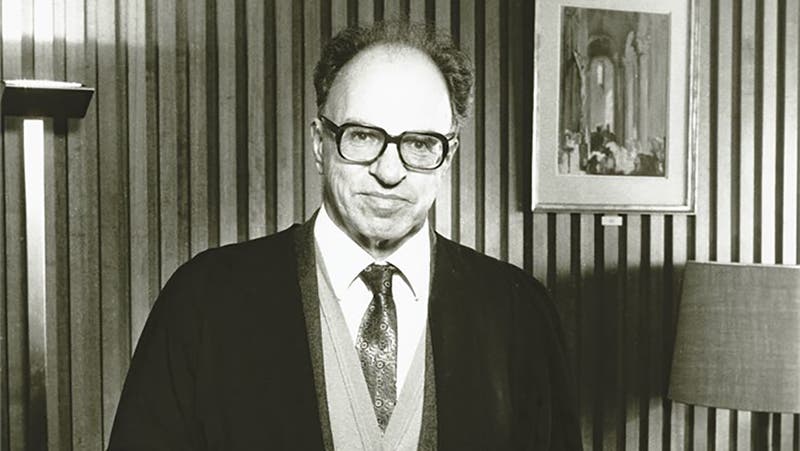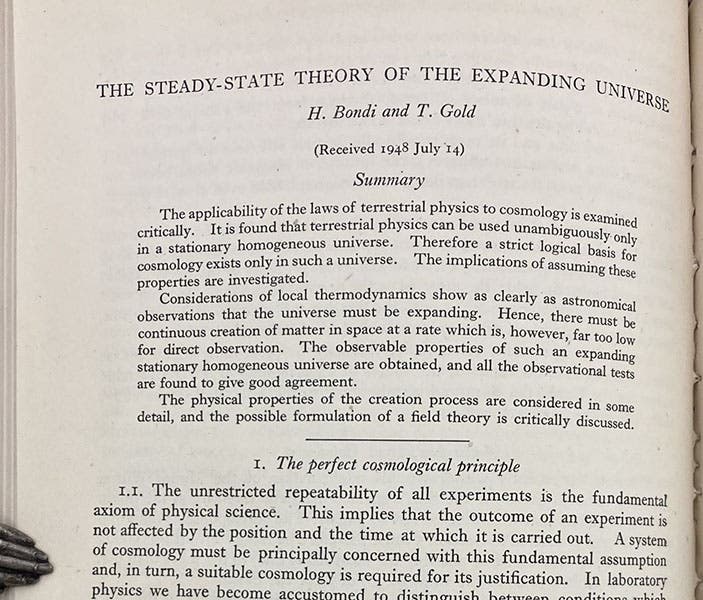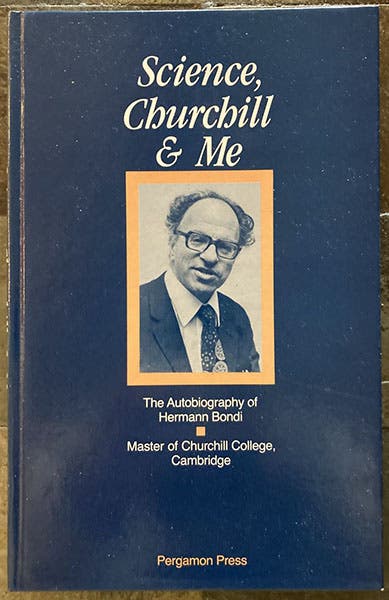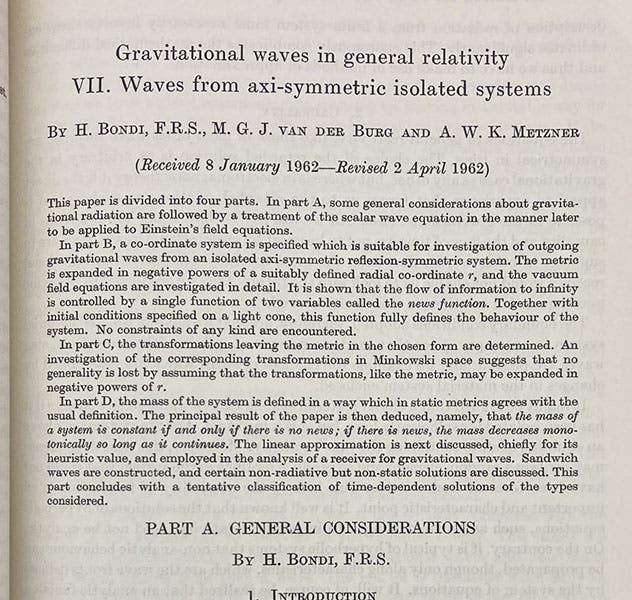Scientist of the Day - Hermann Bondi
Hermann Bondi, an Austrian Jewish physicist who fled to England in 1937, was born Nov. 1, 1919. With the rise of Naziism, Bondi accepted an invitation from Arthur Eddington to study at Cambridge. He was briefly interred in Canada for a year as a friendly alien, after the outbreak of the War, but he was allowed to return to England in 1942, where he worked on radar. When back at Cambridge, he met two other young physicists, Fred Hoyle and Thomas Gold (like Bondi, an Austrian expatriate), and they became interested in cosmology. The burning problem for cosmologists in the 1940s was to explain the increased redshift of distant galaxies, discovered by Edwin Hubble in 1929. Georges Lemaître had proposed, in 1927, that the universe is expanding, and in 1931 suggested that it might be expanding from a state in which the entire universe was a single primeval atom. George Gamow and his colleagues would, by 1948, turn Lemaitre's proposal into what came to be called the Big Bang Theory, where the primeval atom was replaced by a cosmic explosion, which generated not only an expanding universe, but the pantheon of elements.
In 1948, Bondi, along with Hoyle and Gold, proposed what is known as the "Steady-State" cosmology, an alternative to the Big Bang cosmology (second image). Whereas in the Big Bang cosmology, the universe starts out in an unimaginably hot and dense state and the artifacts of the modern universe – atoms, stars, galaxies – come into existence slowly over time, Bondi’s group subscribed to something called the "Perfect Cosmological Principle," the belief that the universe is uniform across space and over time, so that if you went back 10 billion years, the universe would look much as it does now. So Bondi rejected the Big Bang, because it violates the Perfect Cosmological Principle, but the trio had to find some way to accommodate the expansion of the universe. The Steady State theory did so by postulating the continuous creation of matter, so that hydrogen atoms are continually popping up in empty space. As such a universe expands, it doesn't thin out, but stays essentially the same density, because of the continual addition of new matter, which eventually forms new stars and new galaxies to replace the ones that are moving apart. The Steady State cosmology was unusual in being essentially deductive, derived from the intuited Perfect Cosmological Principle, but it had many adherents in the 1950s and early 1960s. When Cosmic Background Radiation was discovered in 1965, the first clear evidence that the universe WAS different in its early days, the Steady State Theory had its first real challenge. With his Principle falsified, Bondi, to his great credit, gave it up. In this famous portrait of the Steady State triumvirate, Bondi is the one in the center (third image).
Bondi became quite active in the field of science policy, at one point becoming the primary scientific adviser to the ministry of defense in England. He was also concerned with science education and headed up several groups to promote the teaching of science in the 1960s and 1970s. To that end, he wrote a book for the general public on cosmology. Actually, he wrote a series of articles for the Illustrated London News in the late 1950s, and the editors of the new Science Study Series in the United States thought the articles, collected as a book, would make a perfect addition to their series, and The Universe at Large was published in 1960 as a 95-cent paperback (fourth image). Alfred Romer's The Restless Atom was published in this same series, as was Robert Wilson's Accelerators: Machines of Nuclear Physics, Charles Vernon Boys' Soap Bubbles and the Forces Which Mould Them and George Gamow's Thirty Years that Shook Physics, all books that I read as soon as they came out. Bondi followed in 1964 with a second book in the series, Relativity and Common Sense. The intent was to turn young high-school students into physics majors in college, and they had exactly that effect on me. I. Bernard Cohen's The Birth of a New Physics, and Arthur Koestler’s The Watershed, were part of the same series; I read them much later, and they helped turn me into a historian of science. To paraphrase Yossarian in Catch-22, that was some series, that Science Study Series.

Front cover, The Universe at Large, by Hemann Bondi, 1960 (author’s copy)
Bondi wrote and published a brief autobiography in 1990, called Science, Churchill, and Me (the “Churchill” in the title is not Sir Winston, but rather Churchill College, Cambridge, where Bondi was Master, but since the College was named after the Prime Minister, Sir Winston is still present). Bondi mentioned in his autobiography that, in his own opinion, his most important work was a paper of 1962 on gravitational waves, implied by general relativity. Since Bondi said in his book that he hated being called a cosmologist, because he worked only a few years in that field, we thought we would show you the beginning of his paper on gravitational waves, as a sort of balance to his paper on the Steady State theory (sixth image).
I recommend his autobiography (fifth image), not only for its brevity (137 pages), which is admirable, but for its insight into how a gregarious exile finds his way in the world and makes friends on every continent, and how he copes with the everyday matters we all cope with, finding a good school system for his children in Surrey, rebuilding a house there and designing a new heating system to keep out the damp that afflicts many homes on the heath, managing a crossing of the Atlantic in 1951 with a pregnant wife and a seasick toddler. My favorite story: Bondi was accustomed to working seated on the floor, with his papers all around him. When his daughter started walking, she wreaked havoc on the papers. Bondi bought a playpen, but she shrieked when placed therein. The solution: Bondi worked in the playpen, and the toddler had the rest of the house to herself.
William B. Ashworth, Jr., Consultant for the History of Science, Linda Hall Library and Associate Professor emeritus, Department of History, University of Missouri-Kansas City. Comments or corrections are welcome; please direct to ashworthw@umkc.edu.











